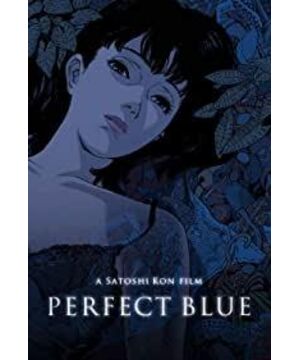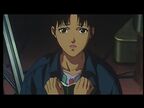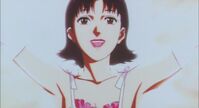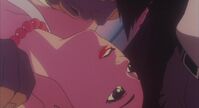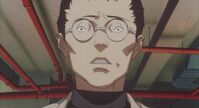Now the 40-minute version is widely circulated on the Internet. In fact, the full version of this video is 110 minutes. No subtitle group has completely translated him. So I asked a friend of a Japanese great god to retranslate this full version of the video together. Since the format of this kind of interview pull film is difficult to translate (Jin Min's words are quite verbose and annoying), I asked my friends to go over and tell me about the main points. Looking at Jinmin's film, I feel that his work is not only an intriguing movie, but a work of art that makes people immersed in it and feels beautiful. Less gossip and dry goods.
In the opening scene, Jin Min wants to show Wei Ma's switching between the concert and daily life. Her life includes performing such a gorgeous part in front of fans, as well as daily ordinary parts. Here in the subway, Jin Min uses Wei Ma's gesture of tempo when listening to a song, and cuts to another scene-Wei Ma's similar arm dance movement during the performance, that is, the same movement is used to make the scene transition. This method makes the lens connection very smooth, and this editing method (thimble lens) is also Jinmin's iconic style. Wei Ma back home, this scene when she was watching the little fish she raised. Jin Min emphasized this composition. The picture is divided into two. Wei Ma on the left side of the screen looks at the fish in the fish tank, while someone is watching Wei Ma outside at the same time. This kind of composition is used a lot. You are looking at others, and others are looking at you.
In addition, Jin Min attaches great importance to the layout of this room, because Wei Ma's room is actually the second starring in this movie. The rooms that are not too numb have a lot of stuff and are mixed. When you see cute things, you can buy them, and the things that fans send are also placed in the house. Jin Min said that his house is like this, it's messy. Only leave a small area for work.
In the mirror below, Jin Min emphatically talks about the way of expressing uneasiness, and the protagonist looks out the window.
This window is designed with a ratio of 4:3, which is the ratio of old TV sets in the past. The windows are like TV screens, and people are being watched in them. In addition, Jin Min mentioned that the editing method of this film refers to "Abattoir No. 5", which uses movements to move around the scene (matching editing or thimble shots). The following is the first drama that Wei Ma participated in, double bind (this name is also very powerful, double entanglement, just in line with Wei Ma's situation). Jin Min deliberately went to the shooting scene to observe the state of the staff during the shooting.
The next scene is again where the posture is up. Virtual Wei Ma and Wei Ma dialogue. The light and shadow design here is very particular. The side that is not numb is the one in the backlit shadow (the clothes that are not numb are also dark green), and the virtual side that is not numb is facing the light.
In the composition of the picture, the virtual non-hemp is high above, and the real non-hemp is curled up on a short bed. "Strong and weak" contrast.
The first murder scene. At the exit of this underground parking lot (in the center of the screen), Jin Min also made a 4:3 ratio. It symbolizes that every day, like TV, there are scenes on display.
Pay attention to the three letters DIE deliberately marked. Jin Min said here that he borrowed from Tim Burton's 1992 edition of "Batman Returns." (It should be the scene where the "hello there" at Catwoman's house became "hell here" after her blackening)
Here is also a very cleverly designed scene. When the script writer opened the elevator, a CD player appeared with music, combined with the previous bedding, the audience's emotions were also mobilized, and they would feel nervously what is going on? When the elevator opened again, the scripter had been killed. And the eye-catching part of the injury is "must be with the eyes."
Jinmin also said that similar methods can be used to express sadness. First express some daily things, and then create sadness through contrast. It's better than exaggerating sadness at the beginning. The next is also a great scene. Jin Min said this is his favorite place. The virtual Weima reappeared, and Weima chased her in a panic. Here Jinmin explained that the virtual Wei Ma leaped away, but at the same time he also had the meaning of inviting Wei Ma. Here is the painting by Honda Xiong (Honda Xiong is a very good painter, a genius called "Master" at a young age), and Jin Min appreciates his excellent painting. The cute side of the girl and all kinds of shapes are drawn very smoothly and naturally. Here I specially cut a few more pictures, so that the painting of full-body running is really quite difficult (there are also many in the millennium actresses, you can recall that in the animation, such full-body running shots are actually rare!) Everyone feel it too.
The following are some of the sub-mirrors that have not been adopted. Jin Min said that there were only 30,000 original drawing papers. And a theater version of animation usually requires about 100,000 copies. Jin Min’s production funding has always been tight, but he uses his own wisdom to make up for the lack of funding.
I think the following picture is great, Jin Min still imitated your voice "Guru Guru Guru" when he talked about this, Jin Min is really a lovely director!
It is a pity that this is not used! Very imaginative and expressive! What kind of subtitles group to join the pot! This is very meaningful! There is a download link in the reply below, and soy oil can also be used for me.
View more about Perfect Blue reviews


